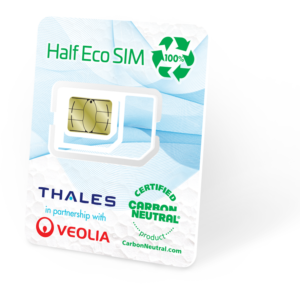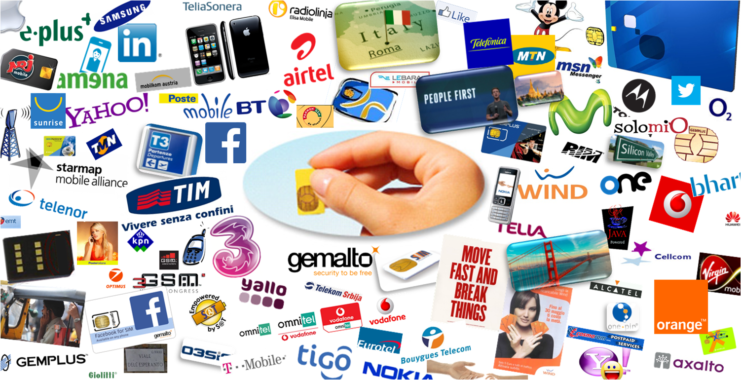This blog was written and published in December 2016 and then regularly updated.
The end of the year is always an opportunity to stop for a while and look back at the success achieved. On top of that, I’ve been working for 20 years in the SIM industry and I thought it’d be a good time to tell you about some of my best memories working in this exciting field. And interestingly…the SIM card has celebrated its 30th anniversary since its first commercial launch at the end of 1991!
1. My first-time SIM initiation
One of my first encounters with a SIM card dates from working as a salesperson for a mobile phone company. I worked there as a salesperson, primarily for SME customers, and witnessed how people were persuaded to move from a solid but pricey 1st-generation mobile service to a “bad coverage” but cheaper cellular 2G/GSM service. SIM cards provided an affordable option for customers, expanding the reach of the mobile phone market. I didn’t realize at the time how much a tiny piece of plastic and electronics would change my life and others.
2. Customers first
A few years later, I started my career at France’s most exciting start-up, Gemplus (then known as Gemalto, and now – Thales – See below 5). As a member of the sales team, I’ve visited all sorts of countries and continents, meeting a diverse range of customers. I learned to listen to and respect the customer voice as my first and deepest market insight. I remember attending one conference in Cannes where the charismatic speaker, Mauro Sentinelli, MD of Telecom Italia (which created the prepaid SIM concept in 1996 in Italy, while TMN in Portugal created prepaid subscriptions a year before – he passed away in 2020) and then Chairman of the GSM Association, stated “the SIM is the dash”.
3. Innovate, succeed, or fail fast
Innovation has been a defining characteristic of the telecom and SIM industries. At Thales, it’s key to everything we do. But finding the ideal compromise between creative ideas and valuable business concepts can be complex.
I particularly admire the speed at which the smart card industry has developed. It began with a GSM standard compliant smart card that providers secure user and network authentication. Relying first on native OS, it then adopted JavaCard as an open OS to provide the “write once, run anywhere” promise for the SIM Tool Kit apps embedded in the SIM. Then came the time for SIM-based client/ server applications based on their original SIM cards assets (OTA/Over-The-Air platform, roaming management, mobile marketing, device management, phonebook contact backup, SIM Reactivation….). Later on, a strong focus on services definitely changed our DNA.
The key lesson I’ve learned is that there needs to be a balance between co-operation and competition to achieve success. Cooperation includes R&D activities, promoting standards, design implementation and deploying smart card applications. Competition means capturing the largest share of the value created by the app. Striking the balance means more innovative and energetic companies.
I’m glad that the innovation aspect has survived – and has been reinforced – along the years. For example, beginning 2011, Facebook made headlines with the launch of Facebook for SIM: our SIM-based solution that lets any mobile operator launch the number one social network on any mobile phone, even without a data plan, simply using SMS. This demonstrates our ability to come in with the right technology at the right moment.
Less than a decade later, Thales Instant Connect allows OEMs and mobile operators to remotely, securely and automatically provide initial mobile connectivity to any unconnected eSIM-ready device at first power-on. It’s disruptive focus has been already recognised twice in 2019 by prestigious awards and nominated at the 2020 GLOMO Awards. I’ve rarely seen an SIM/eSIM-related innovation with so much potential…
The removable SIM card continues to be a field of innovation. This is demonstrated by the launch beginning of 2021 of Thales’ Eco SIM, the world’s first SIM card made of 100% post-consumer recycled plastic. I would never have thought that one day my used fridge could have a second life. Nor that a SIM card could be carbon neutral.
4. MVNO & Private Networks
When MVNO started to emerge, I quickly seized on the opportunity and led the initiative to create Thales’ (Gemplus at that time) MVNO team from its inception. I really enjoyed that period and met with lots of different clients. I attended all the major MVNO events in Europe at the beginning of the 2000’s, meeting pioneers across the industry. I quickly realized we were involved in the launch of about 160 MVNO worldwide.
The key lesson here is an ambitious approach to MVNOs can drive global success. Today, the story is continuing to develop and Thales has established itself as a key player in Latin America, Africa and Asia. MVNO has now evolved to a more mature segment that see the arrival of new players such as car makers and connected devices manufacturers.
4G/LTE and 5G Private networks have now emerged as another way to address specific user groups, such as critical mission entities and sensitive site companies (e.g. airports, hospitals, manufacturing and mining sites, public safety, etc). No doubt there’s a lot to invent here.
5. Creation of Gemalto and acquisition by Thales
Consolidations across various industries has changed the face of the mobile industry, especially SIM cards. It wasn’t surprising to see the nature of the change on December 7 2005, when Gemplus and Axalto announced their merge, which took place on June 1, 2006. There were some initial fears, but we soon realized that it would enable us to become a key player in the industry.
Then in April 2019, Gemalto joined the Thales Group. This truly represents a new opportunity to envision a trustful future. Retrospectively, I feel honoured to experience such –sometimes hectic but always insightful– moves.
6. The eSIM is ready to make an impact

After only a few years of existence, eSIM has become a reality endorsed by the stakeholders as people are getting mature in understanding it. 2018 has been a pivotal year for eSIM. For example, in the consumer segment, after an initial support from some OEM for secondary devices such as smartwatches, Apple’s eSIM endorsement for its iPhones and its iPads will help bring eSIM to the masses. The world’s most popular mobile OS, Android, has also on-boarded eSIM (e.g. Samsung S20 and Motorola razr flagship smartphones, oppo smart watches…). This is a fantastic spotlight for other OEMs and device makers.
Thales confirmed its number 1 position as a provider for eSIM solutions, with more than 200 eSIM management platforms deployed. Twice in a raw (in July 2019 first, then in January 2021), analysis firm Counterpoint has recognised Thales as the world’s leading provider in both hardware-based eSIM (i.e. eUICC) and eSIM management solutions. Integrated SIM (iSIM) is also coming strong on the agenda for bringing mobile connectivity on a growing range of consumer devices, incl. Always Connected PCs, laptops and tablets (e.g. Qualcomm/Thales announcement).
7. Building a 5G world that we can all trust
As every new mobile generation before, 5G created a lot of expectations when it launched.
Once again Thales and the SIM card were on time with this much awaited mobile revolution. For example, the 5G SIM explores new boundaries in user data privacy protection, while 5G security came high on the agenda for ensuring 5G network protection.
With 5G Stand Alone eventually taking off, advanced features are now allowed: 5G identity association helps balancing between enhanced user protection and national security obligations.
5G satellites have entered the ball room: a new generation of satellites will bring onboard 5G capabilities to ensure full 5G coverage of the Earth, in addition to the terrestrial mobile 5G network – reminding me my years at satellite player Orange-owned GlobeCast.
Being part of this adventure is an immense pleasure. Thales contributes to it via its Building a 5G world that we can all trust vision.
In conclusion, it’s clear that the SIM card industry has been transformed over the last 25 years or so. I realize I could bid for the title of “SIM card veteran” – but don’t get me wrong, there isn’t a sense of nostalgia – I’m looking ahead to the future!
What about you? What’s your best mobile SIM-related experience – either as part of the SIM industry or the wider telecom sector? I’m looking forward to reading your thoughts in the comment section below, or at @ThalesDigiSec.
I’d also be glad to connect with you on LinkedIn.



